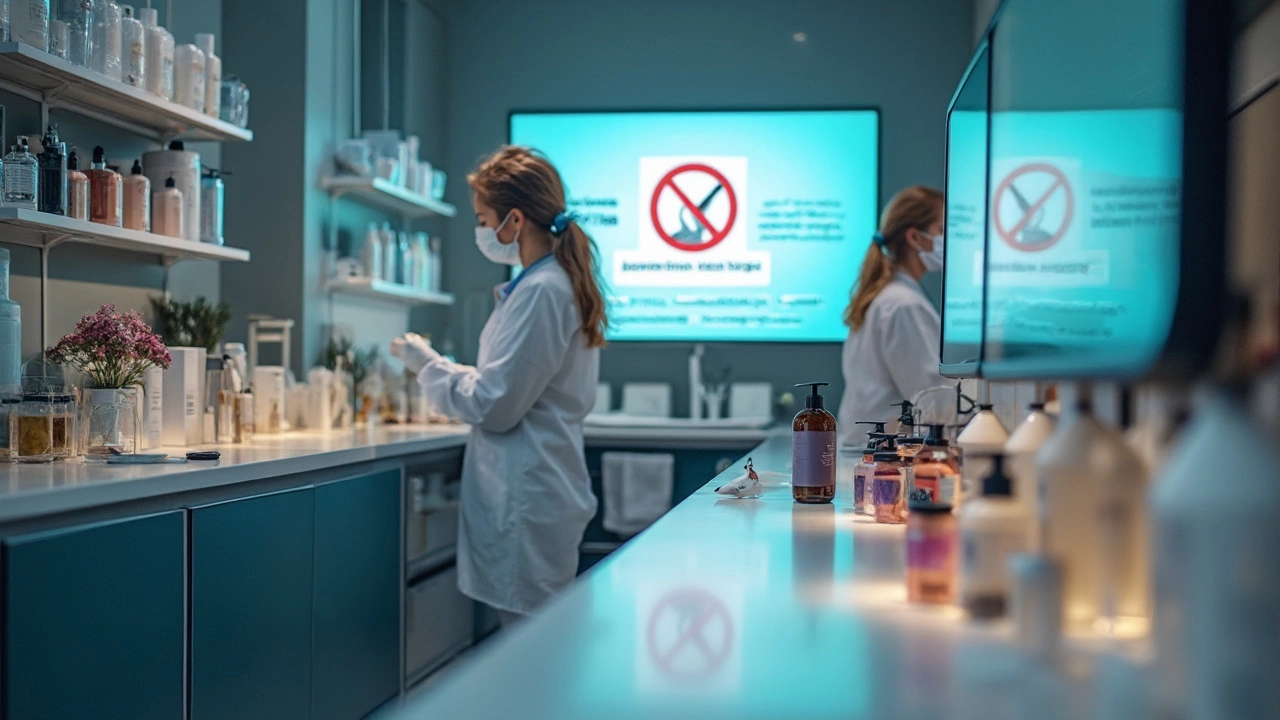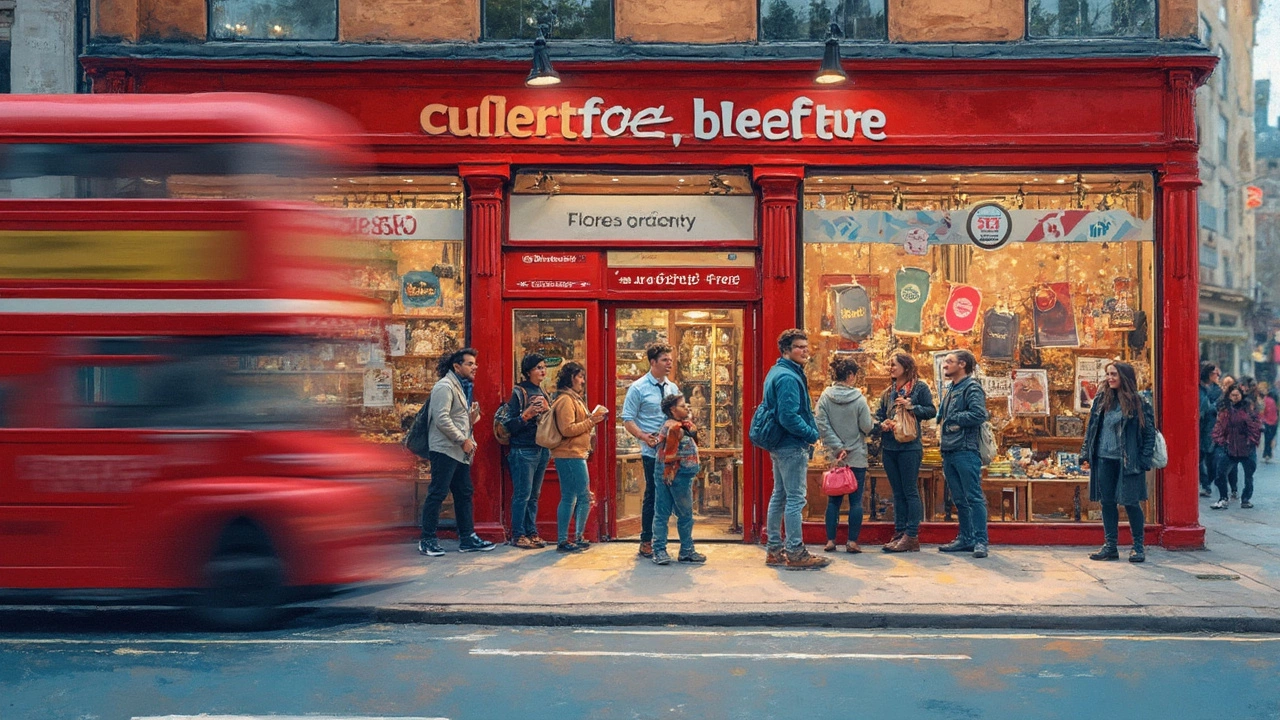Is Clinique Cruelty-Free? The Truth About Animal Testing
 Jun, 8 2025
Jun, 8 2025
Ever grabbed a Clinique product and wondered if animals paid the price for that glowing skin? You’re not alone. So many of us want great makeup, but honestly, nobody wants it at the cost of animal suffering. Here’s the catch: brands toss around words like “cruelty-free,” but behind the scenes, things can get complicated fast.
If you just want straight talk—Clinique is not considered cruelty-free right now. Their products aren’t tested on animals in most places, but they do sell in countries where animal testing is required by law. Frustrating, right? That means even if they say, “We don’t test on animals,” the fine print tells a different story.
Why does this matter to you? Because being informed means you get to decide what goes in your cart. If you care about animal testing (or you’re just tired of misleading labels), stick with me. You’ll learn how to spot the real cruelty-free stuff and avoid all the fake promises.
- What Does Cruelty-Free Really Mean?
- Clinique’s Official Animal Testing Policy
- The China Problem: Where Clinique Sells
- Spotting Truly Cruelty-Free Brands
- Better Choices: Tips for Ethical Shopping
What Does Cruelty-Free Really Mean?
The term “cruelty-free” gets tossed around everywhere, but what does it actually mean? It’s not just a fancy label. When a product is truly cruelty-free, it means neither the finished product nor any of its ingredients were tested on animals, anywhere in the world, at any point in production.
That might sound simple, but the beauty business is loaded with loopholes. Some companies claim to be cruelty-free just because they don’t test the final product, but they might use ingredients that were tested on animals by their suppliers. Others dodge direct testing, but allow testing "where required by law"—that’s code for places like mainland China, where animal testing is part of the deal for selling cosmetics in stores.
Here’s a quick snapshot of how "cruelty-free" can be defined:
- No animal testing on the final product
- No animal testing on individual ingredients
- No third-party animal testing on behalf of the company
- No sales in places that legally require animal testing, like mainland China (for imported cosmetics)
Labels aren’t always enough. Only third-party certifications—like the Leaping Bunny or PETA’s Beauty Without Bunnies—give you some real confidence.
| Certification | Guarantees |
|---|---|
| Leaping Bunny | No animal testing by brand, suppliers, or third parties at any stage |
| PETA Beauty Without Bunnies | No animal testing and no contracts with companies that test |
Companies looking to cash in on ethical shoppers sometimes bend the truth. Just because you see the words “not tested on animals” on a label doesn’t mean much—it might only apply to the product’s last step, not the ingredients or what happens overseas. That’s why knowing the details matters if you want to support cruelty-free brands.
Clinique’s Official Animal Testing Policy
Let’s look at what Clinique really says about animal testing. If you check their website or packaging, you’ll find a statement that goes something like: “Clinique does not test on animals. We don’t ask others to test for us, except where required by law.” It sounds nice, but there’s a major catch hiding in that second half.
The phrase “except where required by law” is the loophole. This means that in places like mainland China, where the government requires animal tests for products sold in physical stores, Clinique allows animal testing to happen. They may not do the testing themselves, but their products can still end up in labs because of local regulations.
Here’s what you should know about the current animal testing situation with Clinique, as part of the Estée Lauder group:
- Clinique’s parent company is Estée Lauder, which sells in countries that legally require animal tests.
- Clinique is not certified as cruelty-free by third-party groups like Leaping Bunny or PETA.
- Their policy allows testing where it’s required, so they don’t fully meet cruelty-free standards.
Putting numbers to it, check out this quick summary:
| Brand | Sold in China | Tested on Animals Where Law Requires | Cruelty-Free Certification |
|---|---|---|---|
| Clinique | Yes | Yes | No |
If you see a makeup brand say it’s cruelty-free but it’s selling in places with mandatory animal testing, that’s your red flag. For people who want 100% cruelty-free products, this policy just doesn’t cut it.

The China Problem: Where Clinique Sells
Here’s where things get tricky for Clinique and animal testing. The brand sells its products in mainland China. Why does this matter? Because, according to Chinese law, imported cosmetics have to go through animal testing before hitting store shelves. So even if a brand doesn’t test on animals elsewhere, selling in China means animal testing is still part of the process—just outside the brand’s direct control.
No matter what’s printed on the label, if a company agrees to sell in China, animal testing can happen. It’s not about what the brand chooses to do in their labs—it’s about what the law requires before a product launches there. This is the catch that trips up a ton of beauty brands, not just Clinique.
How big is this issue? Take a look at the numbers:
| Country | Animal Testing Required by Law? | Clinique Sold Here? |
|---|---|---|
| USA | No | Yes |
| UK | No | Yes |
| Mainland China | Yes (for imported products) | Yes |
| Australia | No | Yes |
If you’re shopping at an airport or big mall in Shanghai, Clinique will be on the shelf—and those products will have gone through the required tests. Even though China now allows some products to skip animal testing if they’re made locally and meet certain rules, imported products (which is most big brands like Clinique) still face these requirements.
It’s easy to get caught up thinking any popular brand must be cruelty-free by now. But as long as Clinique keeps selling in places with mandatory animal testing, the brand can’t really call itself fully cruelty-free. If avoiding animal-tested makeup matters to you, always check if a brand is in the Chinese market—it’s the golden ticket for figuring out who’s really walking the talk.
Spotting Truly Cruelty-Free Brands
So how do you really know if that mascara or moisturizer is honest about being cruelty-free? The truth is, it’s not always as easy as reading a sticker on the box. Loads of brands use the term “cruelty-free,” but there’s no law that says what it actually means. To make things trickier, a brand can say they don’t test on animals but still sell in places like mainland China, where animal testing can be required.
If you want to cut through the marketing noise and actually pick out true cruelty-free brands, here’s how:
- Check for third-party certification. Look for trusted logos like Leaping Bunny or PETA’s cruelty-free bunny. These guys don’t hand out their stamp just for fun—they actually audit and require written commitments from brands.
- Check the company’s official statement. Be wary of brands with vague wording. “We do not test on animals except when required by law” means they probably sell in China and aren’t truly cruelty-free.
- Know the parent company. Some brands claim to be cruelty-free, but their bigger parent corporation funds animal testing. You get to decide if you’re okay with that, but it’s good to know who’s behind the label.
- Use cruelty-free databases. Websites like Cruelty Free Kitty, Logical Harmony, and Ethical Elephant keep updated lists and do a lot of the investigating for you. Super handy if you want to double-check before buying.
Want a few names you can trust right now? Try e.l.f. Cosmetics, Covergirl (since 2018), and Milk Makeup. These are confirmed cruelty-free, even by picky standards. Brands can lose or gain their status, so don’t be shy about checking before you shop.
One last tip: Don’t fall for greenwashing. Just because something says “vegan” doesn’t always mean it’s cruelty-free, and vice versa. Vegan means no animal ingredients, but without the cruelty-free part, animal testing might still be involved. Keep an eye out for both if you want the whole package.

Better Choices: Tips for Ethical Shopping
Shopping for makeup can get tricky when you want to stick with brands that don’t harm animals. The beauty shelves are covered in labels and claims, but only a handful actually live up to the real cruelty-free promise. So, here’s how you can shop smart without second-guessing your choices.
- Look for Third-Party Certifications: Keep an eye out for logos like Leaping Bunny or PETA’s cruelty-free bunny. These aren’t just decorations. Brands have to jump through serious hoops and audits to get these stamps, so you can trust the claim.
- Check Detailed Brand Policies: Some brands love to say they’re “cruelty-free,” but dig a little deeper. If they sell in mainland China (not Hong Kong), law still requires animal tests for imported cosmetics. Always check the brand’s FAQ or website for specifics on where they sell.
- Use Reliable Lists and Apps: You don’t need to memorize hundreds of brands. Download free apps like Cruelty Cutter or check websites like Cruelty-Free Kitty, which are constantly updated with legit info.
- Watch Out for Parent Companies: Some brands look cruelty-free but are owned by bigger companies that test on animals. Decide if that matters to you, then double-check before buying.
- Think Beyond Makeup: Ethical shopping isn’t just for lipstick—extend the habit to skincare, hair products, and even household stuff. Swapping your old face wash for a certified cruelty-free one is an easy win.
Want some real data on where top brands stand? Here’s a quick rundown of a few well-known companies and their cruelty-free status, updated for 2025:
| Brand | Cruelty-Free? | Certified by Leaping Bunny or PETA? | Sells in Mainland China? |
|---|---|---|---|
| Clinique | No | No | Yes |
| elf Cosmetics | Yes | Leaping Bunny | No |
| NYX | Yes | PETA | No |
| L'Oreal | No | No | Yes |
| Too Faced | Yes | PETA | No |
If you’re ever stuck, remember this: checking for that one simple cruelty-free logo is faster than scrolling through endless brand statements. And every purchase is a vote—where you spend matters. Swap just one makeup item, and you’re already making a difference.
